It’s growing season, and new life, healthy harvests, and vibrant colors are everywhere you look. Summer’s markedly prolific nature possesses an almost spellbinding effect, creating an environment ripe with possibility and hungry with the promise of good things to come.
With the advent of Coronavirus, society has witnessed a particular resurgence in gardening. This growing interest[1] hit an all-time high in March when Google searches for gardening practically broke the Internet and seeds, plants, and tools began flying off the shelves quicker than nurseries could handle.
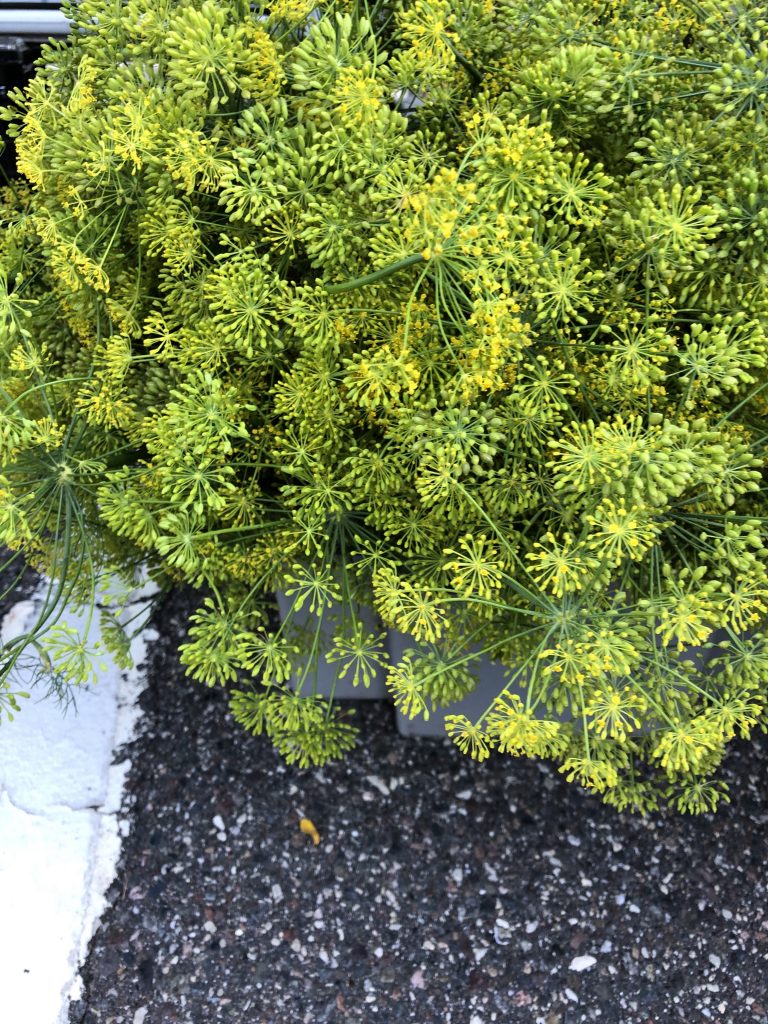
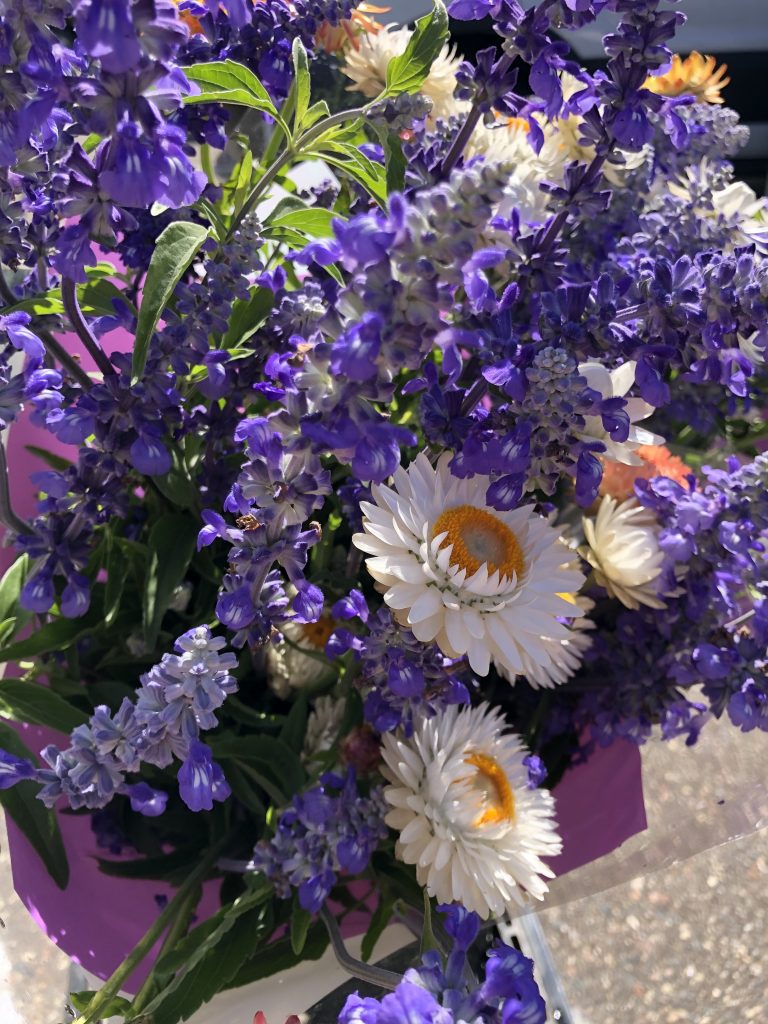
Notably, the concept of “victory gardens” have made a particular comeback within this rapidly growing trend. During World War I, Americans experienced an increasing food shortage and were subsequently encouraged to grow their own produce in personal “war gardens.” Many agricultural workers were drafted to fight overseas, leaving the people at home to get creative in finding sustainable ways to feed their families. Soon, do-it-yourself gardens began cropping up[2] in schoolyards, parks, and vacant lots. By the time 1918 rolled around, over five million new gardens were born into existence and the official concept of a “victory garden” was born.
Perhaps unsurprisingly, energy around this war-era social trend has resurfaced in the last several pandemic-ridden months. Whether individuals are looking for additional food security or a much-needed new hobby, this experience has re-emphasized the value of being self-sufficient and growing your own food, particularly in times of crisis.
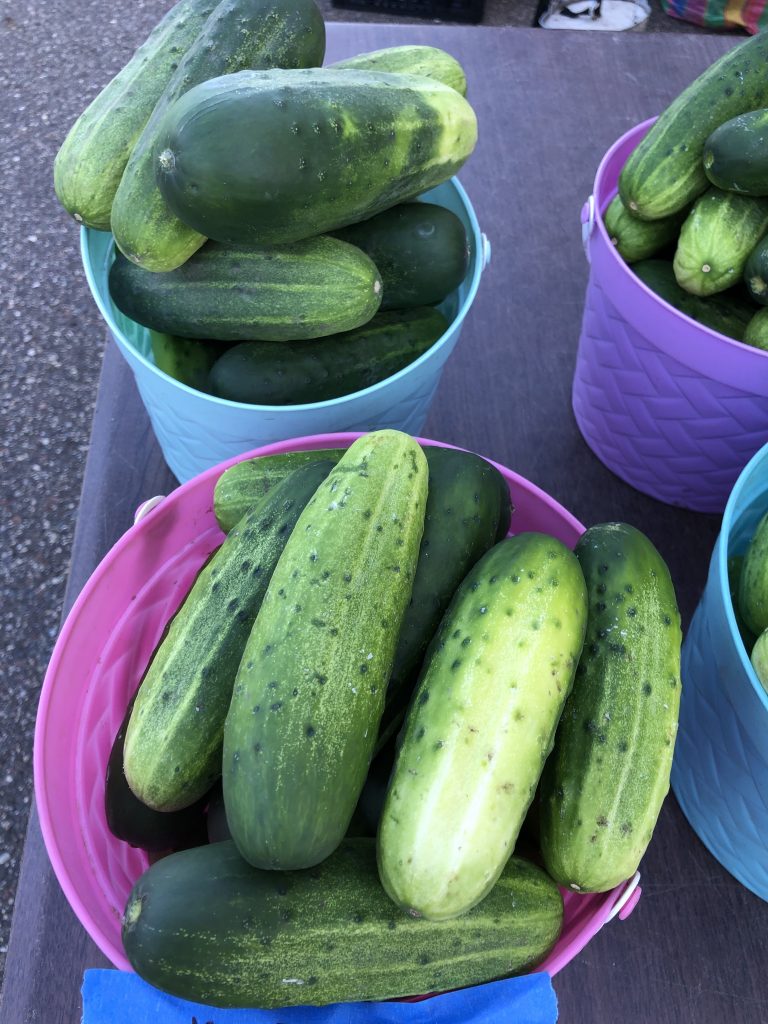
That said, I guess it’s fair to say I’ve caught the “victory garden bug:” Or at least some version of it. While my humble balcony oasis doesn’t constitute a full-fledged garden by any means, this season I am growing both jalapeños and cherry tomatoes and have enjoyed watching my plants sprout from tiny seedings to wild, —if not unwieldy[3]— fully mature plants. There’s a certain satisfaction that comes with being able to eat something you’ve carefully cared for and cultivated, and I am eager to savor this feeling and make it last through the remainder of summer.
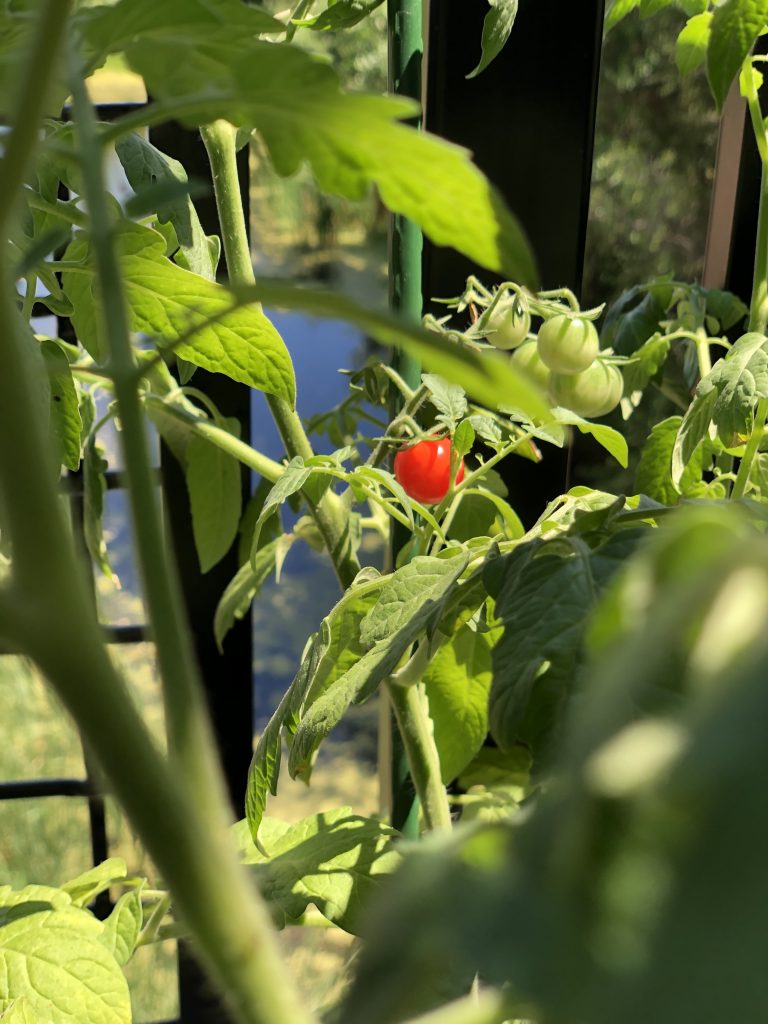
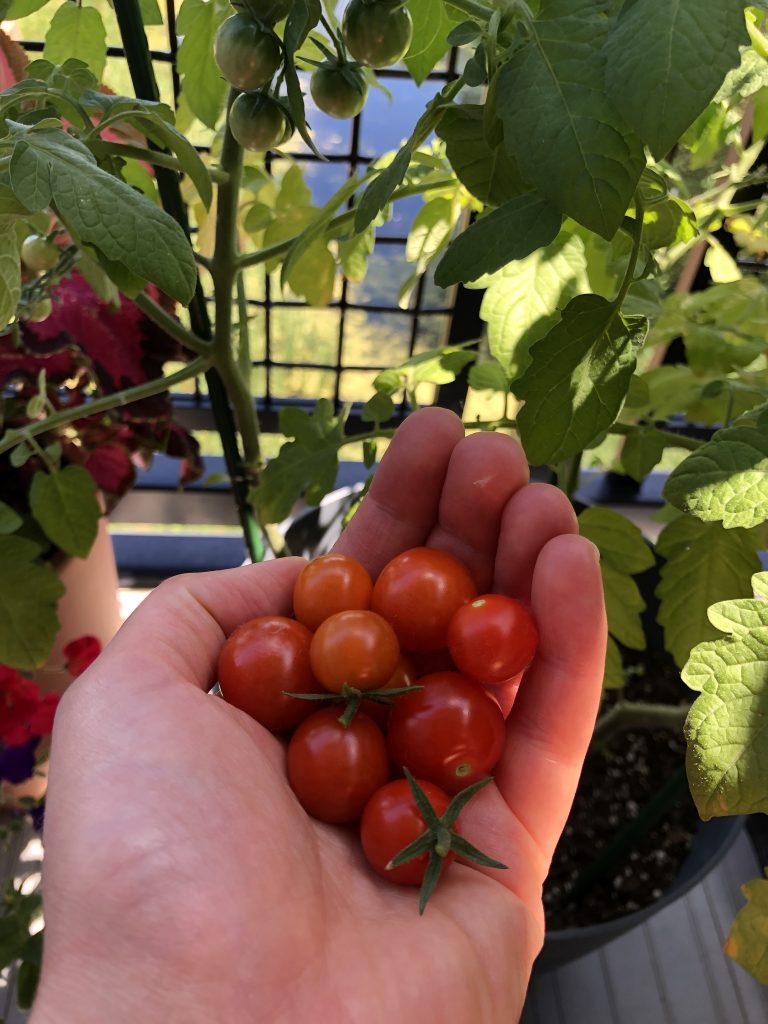
Unable to grow your own victory garden? Never fear! Opportunities to “shop local” abound, particularly when it comes to fresh fruits and veggies. Farmers markets have skyrocketed in popularity over the last several years, and for good reason too. Not only do these markets provide access to fresh, locally grown foods, but they support small farmers and lift local communities. Not only do farmers markets offer some of the tastiest, juiciest produce you can buy, but it’s also some of the healthiest: Many farmers go to great lengths to grow the most nutritious yield possible by cultivating heirloom varieties, using sustainable techniques, and picking produce during the peak of growing season.
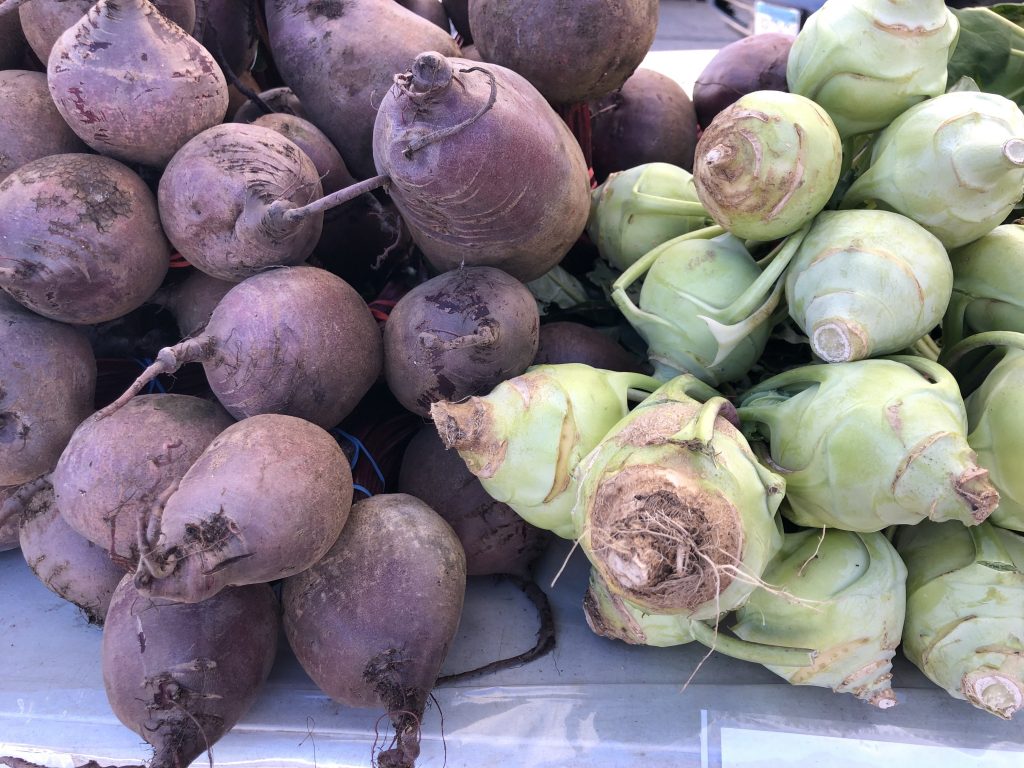
In case you need additional convincing, farmers market produce is seasonal and reflects true regional flavors in the most timely, authentic way possible. In a world where we can pretty much procure any produce during any period—regardless of whether it naturally thrives during that season or not—there’s something almost liberating about funneling your cooking energies into only that which is truly freshest and most relevant. Choosing ingredients from your local farmers market helps you reconnect with natural seasonal cycles and ultimately expands your possibilities by narrowing your options to an organic, carefully curated list of fruits and veggies.
Personally, I love the sense of adventure and discovery associated with each market visit: You never know exactly what you’ll find, and that’s part of the fun! While I am the queen of list making and love all things organization, sometimes it’s nice to leave the planning behind, stroll through the various stalls, see what strikes your fancy, and then work backwards to devise a creative menu inspired by your freshly picked produce.
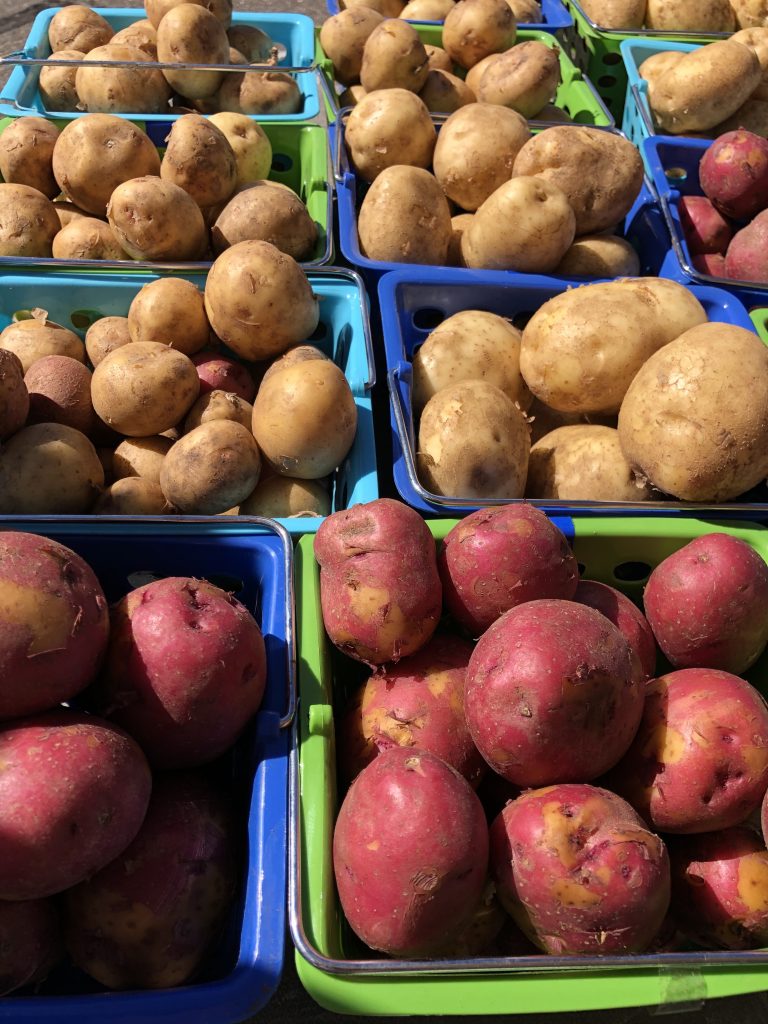
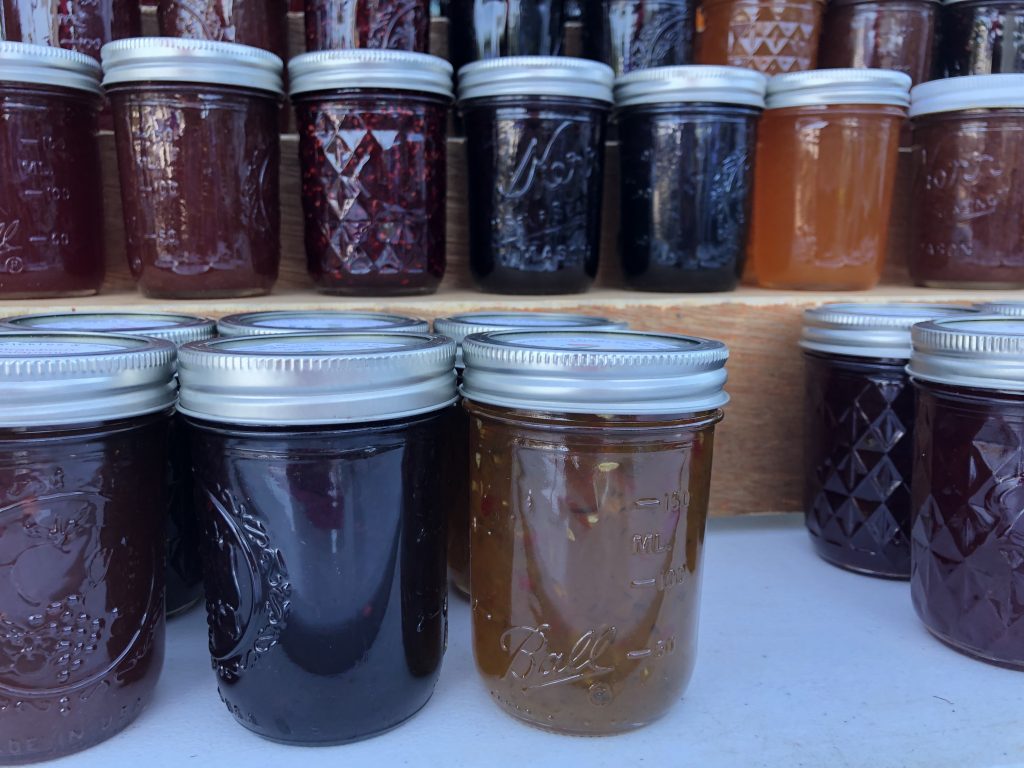
Looking to escape your corona-cooking rut and whip up something new? You’re in luck! Farmers markets typically feature foods such as green garlic, watermelon radishes, red carrots, and purple cauliflower that you might not necessarily encounter at your regular supermarket. This inherently adventurous quality provides the perfect “excuse[4]” to widen your palate and get curious about the wide—and delicious—variety of produce grown (almost!) in your own backyard.
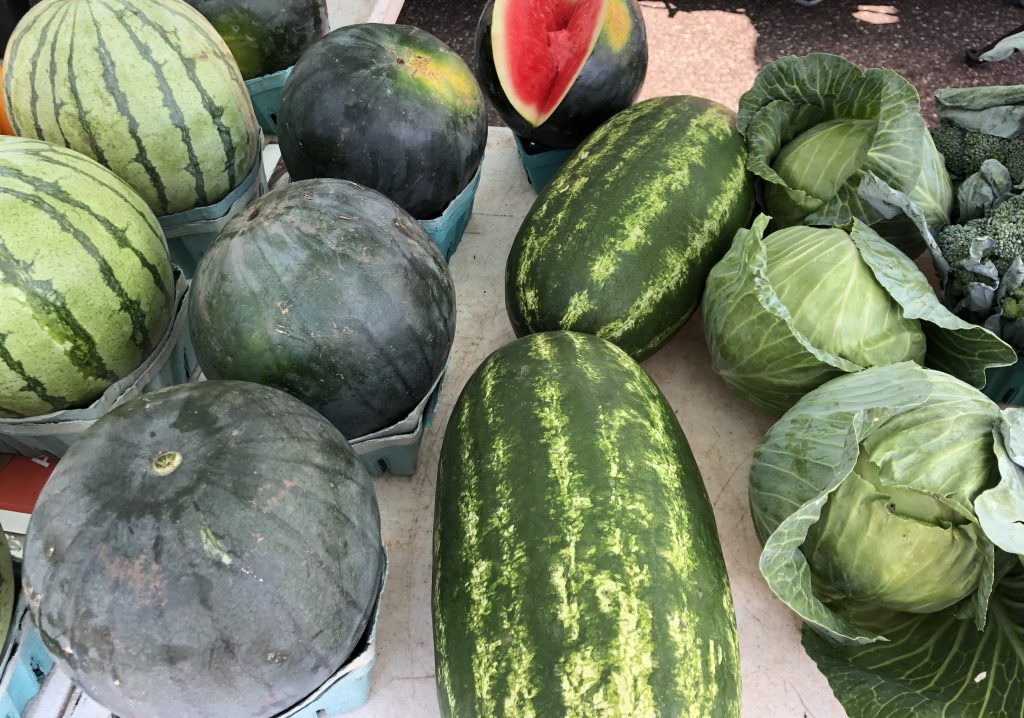
Because we eat with our eyes just as much as we do with our stomachs, farmers markets also possess a profound visual appeal. There’s something magical about seeing your produce carefully arranged in clusters of colorful goodness that you don’t experience in the same way when shopping in the store. Nature is absolutely teeming with beauty, and while we tend to attribute this splendor to larger, more iconic natural feats such as lakes, rivers, and mountains, there’s something equally compelling about the simple, subtle exquisiteness of everyday natural wonders. The robust red of freshly picked tomatoes, the crisp green of recently plucked cucumbers, the rich royal purple of newly harvested eggplant: Even the seemingly most inconspicuous elements of nature evoke awe and create a dazzling spectrum of brilliant colors.
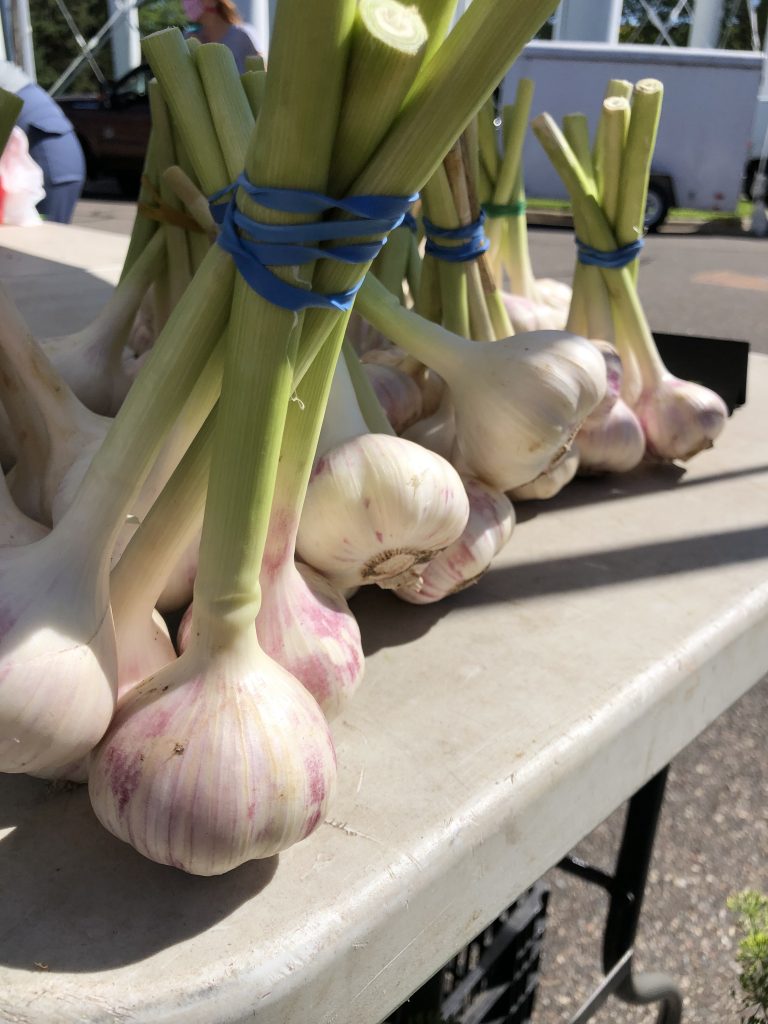
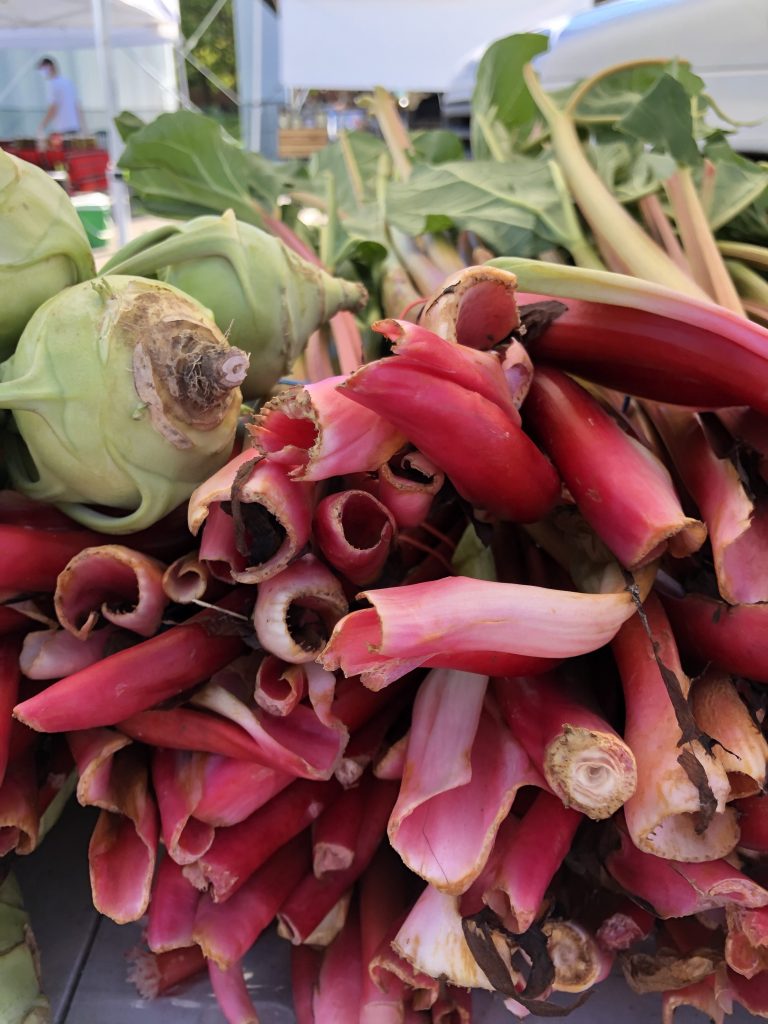
Last Sunday Cam and I visited one of our many local farmers markets for fresh produce and inspiration. I was struck by the gorgeous displays of fruit, towering stacks of vegetables, and numerous vivid reminders of the natural beauty that surrounds us. We made a slow, meandering lap around the market perimeter, taking our time to soak in the tiny details that flourished around us. Looking for corn, we were particularly intrigued by a stall for Beck’s Farm and Greenhouse that featured everything from potatoes to strawberries to honey. Located in Elk River, Beck’s boasts a bountiful 112 acres and an impressive four generations of family farming. Impressed, we picked up half a dozen ears of corn and a jar of honey before making a stop at a neighboring stall, Schyma’s Pickles & Preserves, for a jar of sweet and spicy pickles we couldn’t wait to sample.
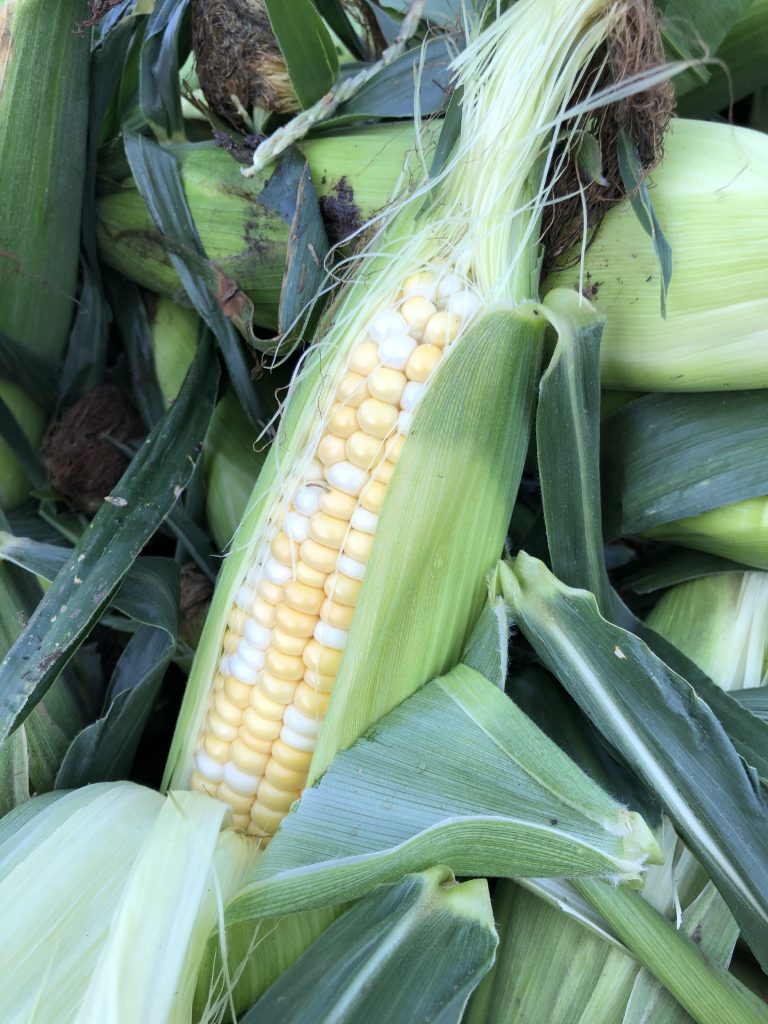
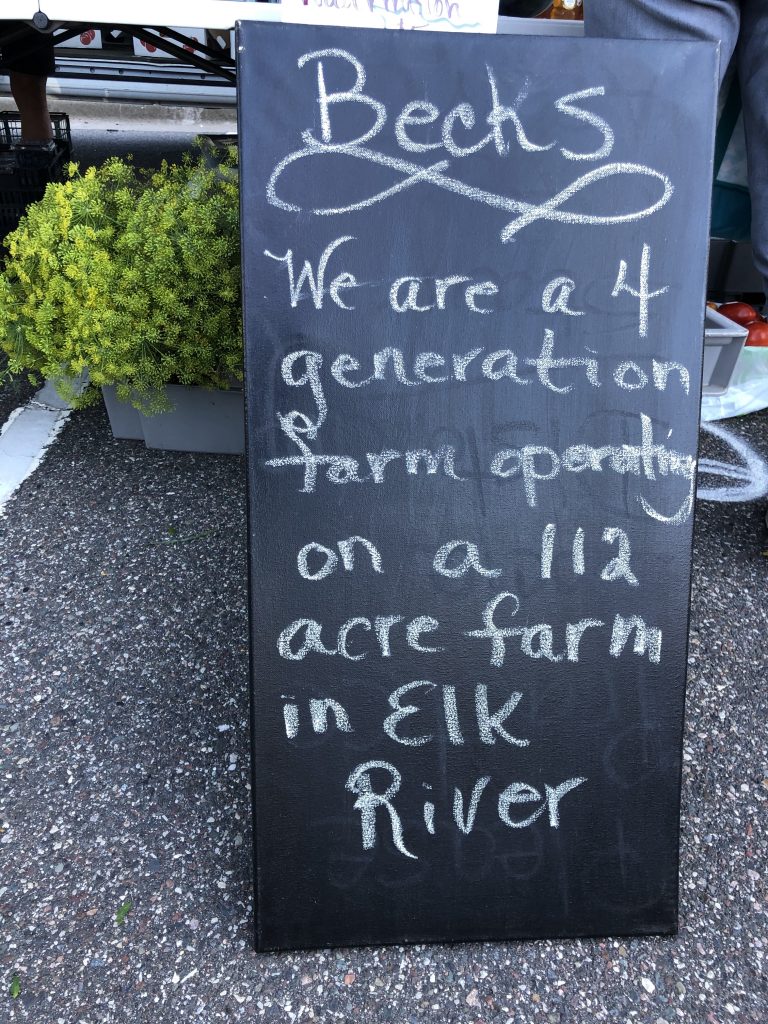
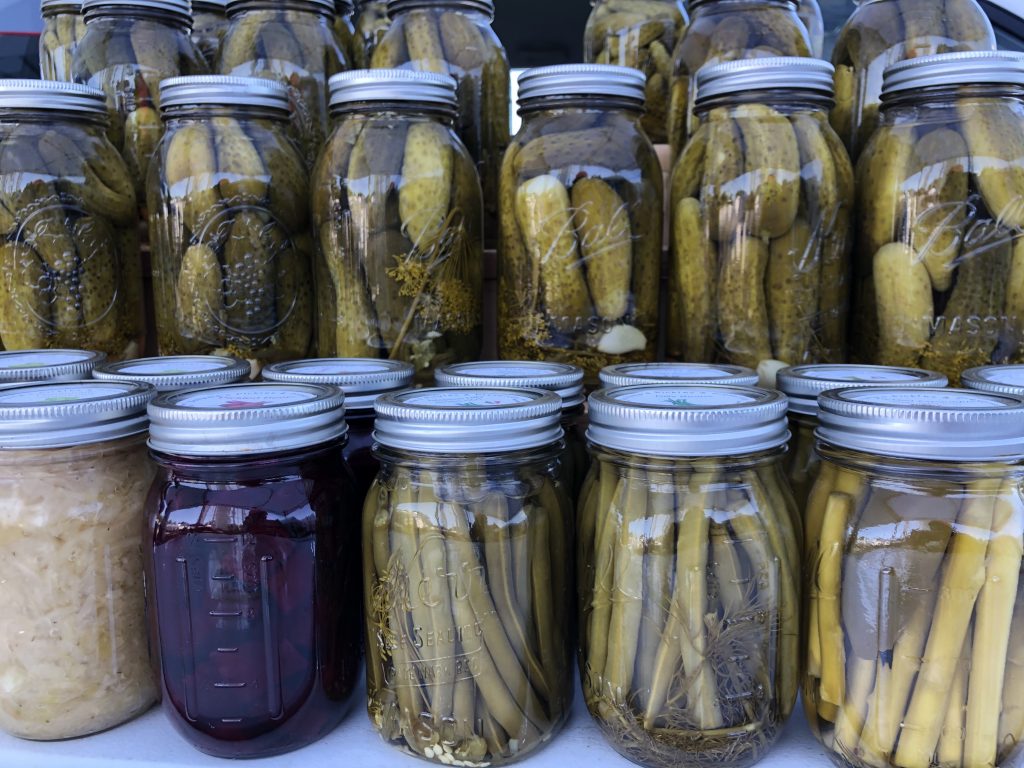
Casually strolling through a farmer’s market on a bright sunny day and perusing the kaleidoscopic stalls without any specific objective in mind is a feeling you just can’t effectively replicate in traditional grocery stores. Patrons don’t visit the market to just simply shop or knock out an essential weekend chore. Rather, the farmers market functions as a place of community, connection, and celebration: It offers a chance to escape the pressing realities of everyday life, refresh one’s outlook and sense of creativity, and ultimately nourish the body and soul in equal parts.
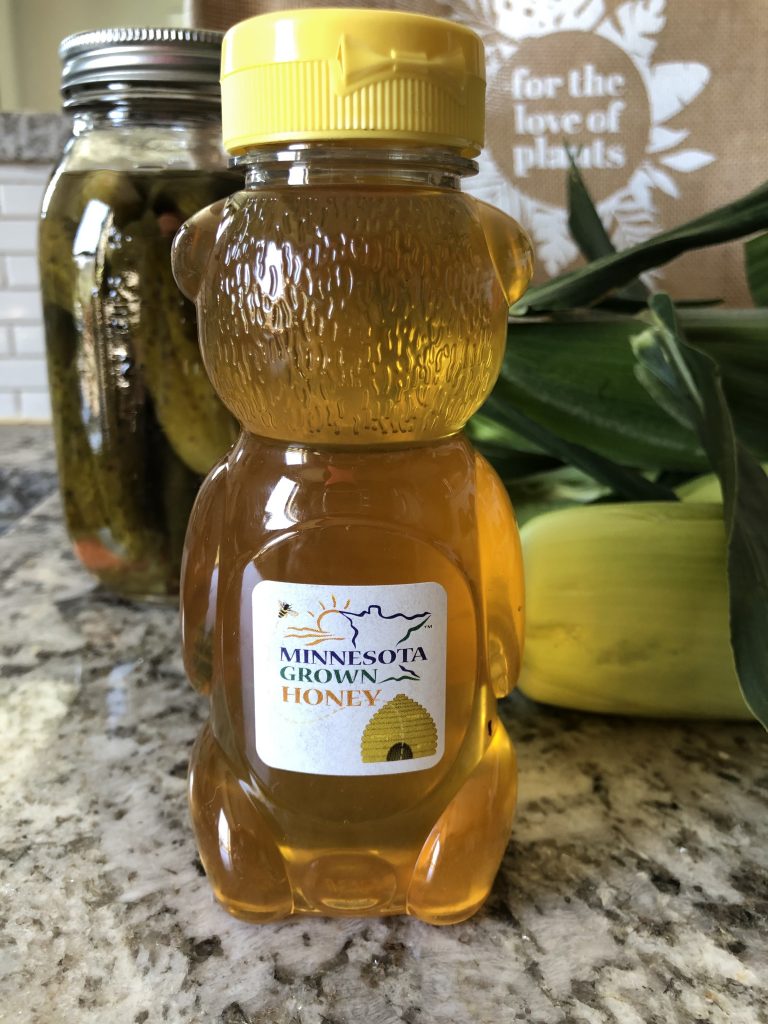
During a particularly poignant moment of Hamilton the title character famously sings: “Legacy. What is a legacy? It’s planting seeds in a garden you never get to see.” Whether we ultimately “see” the fruits of our labors or not, this sentiment serves as a haunting reminder that what we do today matters and has immense power to create lasting effects not only for ourselves but for future generations.
So whether the “seed” you plant is literal and in your backyard or an intentional investment in choosing to support local farmers markets, consider growing something larger than yourself this summer. I promise it will reap more benefits than you could ever dare imagine.
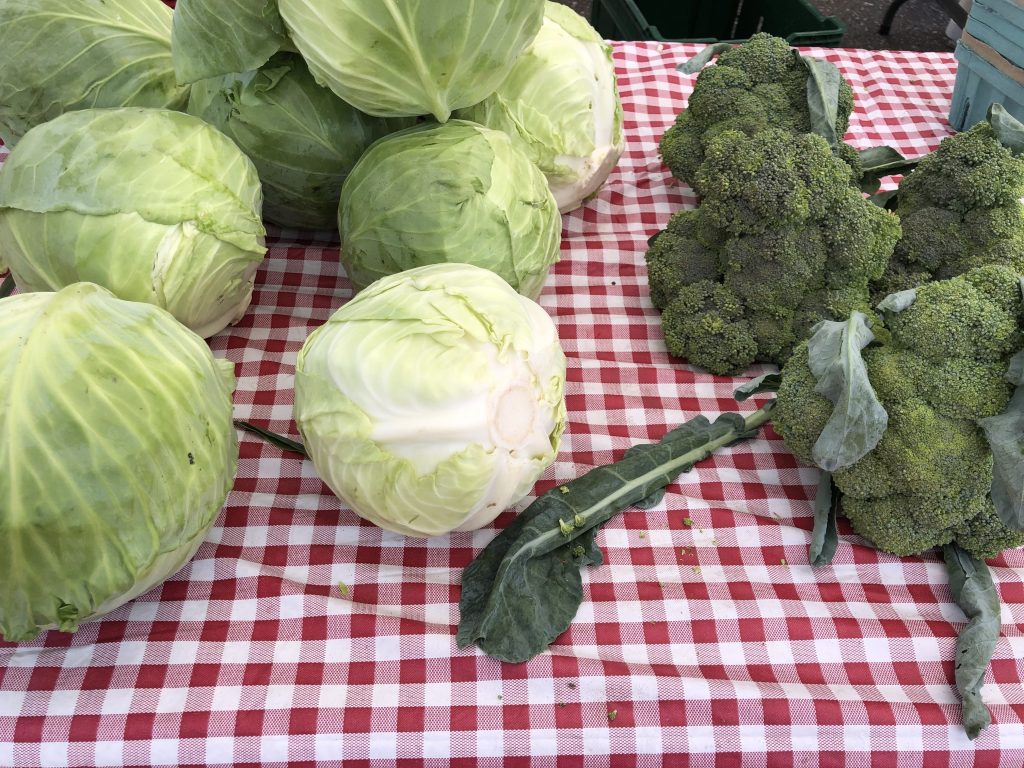
[1] Pun most certainly intended.
[2] Again, intended. I’m sorry, I can’t help myself.
[3] My tomatoes are threatening to take over the deck. It’s kind of insane. Soon they will be taller than I am…
[4] Not like you need one…



Comments are closed.